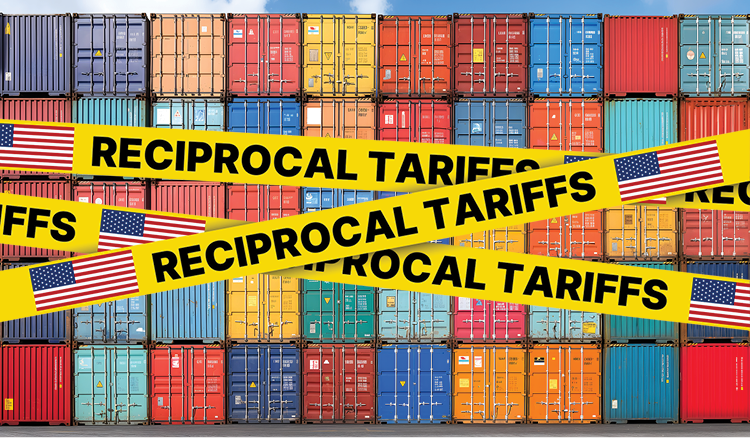Eliminating Workforce Turnover: Uphold Expectations Set at Recruitment
Your operation cannot seem to get over the workforce hump and hit its stride because people keep walking out the door, which is holding back productivity and preventing you from growing the business. Across the United States, distribution and fulfillment centers are experiencing turnover rates of 50% on average, while others are experiencing even more dramatic turnover rates approaching 100%.
You are not alone in this. Production workforce turnover is a big driver of performance gaps across operations in manufacturing, distribution, and supply chain, and it’s a big challenge across the country. As an operations leader, you are most likely experiencing the labor shortage along with the frustration of workforce turnover in production areas.
At Veryable, we know that turnover is a primary concern among businesses and have seen firsthand how it limits the ability to compete and deliver on customer expectations in the marketplace. Our on-demand labor solution is how we equip businesses to overcome this challenge.
This article isn’t meant to be self-serving to convince you to use our on-demand labor platform. Multiple strategies exist to reduce turnover, but one of the biggest underlying problems is transparency regarding expectations. So we wrote this to encourage businesses to be more straightforward in their communication of expectations and cultivate degrees of operational flexibility instead of extracting it from the current workforce.
In 95% of our articles, we walk through both sides of an idea or topic to arm you to make the best decision and do right by you. In this article, we feel so strongly about this topic that we are leading with our opinion on combating workforce turnover and will talk you through the next steps you should take to reduce turnover in your operation.

Why you should stick to the expectations you set
When recruiting and onboarding new full-time employees, you need to hold up your end of the deal on the expectations communicated during the onboarding process, particularly around overtime policy, skill development, and scheduling. This will give credibility to your business and earn the trust of your workforce.
Keeping true to the expectations you set can be difficult for many businesses because this will mean a change in their onboarding process and how they follow through on a regular basis. Now you might be wondering - what do we mean by this?
We’ll talk through some examples below so that you can see how businesses often set an expectation and then fail to hold true to it once they hire someone.
Common mistakes businesses make when setting expectations
The table below shows a few ways businesses set initial expectations during the hiring process and then lose the trust of their workers by going against these statements with their actions.

Opportunity for overtime
During the recruiting process, overtime is always a topic that comes up and is an important one to address. Workers are certainly interested in having the opportunity to work overtime to earn extra cash, but they are going to have to evaluate their personal schedule when making that decision.
People have personal obligations that mean they are not consistently able to work overtime. This is why mandatory overtime is so troublesome, and nothing kills morale faster than mandatory overtime or a mandatory Saturday.
If mandatory overtime is part of the equation at your business, make sure to lay it out there at the beginning and let the potential full-time employees consciously opt into the work style. Overtime should not be presented as a self-selected opportunity to earn extra cash if most of the overtime offers come up as mandatory.
Opportunities to learn a new job function
Another area where direct language is the best option is in discussing individual skills development. All too often, new people are sold on learning new skills or functions, but companies don’t accurately portray when that will happen.
Workforce development is important to the person and the business. Even from your perspective, the best place to find the next highly skilled operator is within your current workforce base.
To avoid burning yourself with this, you should communicate directly about the prospect of learning new skills and the associated timing to properly align expectations. A bad result would be a hungry new worker getting fed up from not getting the opportunities they expected and storming out, leaving you to hunt for another worker again.
Opportunities to move to first shift
Many times over, we’ve seen the same thing: if a business is operating more than one shift, then the majority of people would prefer to be on the first shift. In a number of instances, first shift slots are used as part of an incentive plan to encourage competition within the workforce to raise the bar.
In some operations, the first shift slots are occupied, and uncertainty exists around the timing on a spot. Be sure to clear up how and when a worker can move to the first shift, so that everyone knows exactly what to expect and feels that this is being handled fairly.
Solutions for holding to expectations through operational flexibility
Most of the time, when businesses fail to live up to the expectations they set with their workers it’s because their operations are spread thin. So they’re trying to pull more work from their current workforce out of necessity.
It doesn’t have to be that way, because you can cultivate operational flexibility to free you from this trap of over extraction from your FTEs.
There are a few ways to achieve greater flexibility in your operations:
Develop a part-time workforce
If you need more work done than your current workforce can handle, but don’t have a big enough need to hire more FTEs, it might make sense to develop a part-time workforce to handle the extra work. Many businesses use a mixture of part-time and full-time employees on a regular basis to knock out their workload because if their need becomes greater, they can offer full-time employment to some of the part-time workers to scale. This approach is often taken by companies with predictable demand or in training intensive service jobs.
Identify points of flexibility regarding scheduling
Building flexibility into the schedule for workers is one way to benefit your business and workers at the same time. If you give workers more options for when to show up and how long to work, they might like the added choice. And you can break up less attractive shifts so that workers will be more likely to fill them. For example, on a Saturday shift, would people be more interested in working 4-6 hours instead of a regular 8-hour shift? If they are more interested in shorter shifts, you could have happier workers and a more consistently filled Saturday shift.
Create a labor pool of on-demand workers
One way for manufacturing and logistics companies to address growing or unpredictable demand while avoiding overtime is to create a flexible extension of their workforce with on-demand labor. When you use on-demand labor to build a labor pool, you gain the ability to add capacity instantly and scale back down just as quickly when the work is done.
To learn more about how on-demand labor gives you the tools you need to build a flexible extension of your workforce called a labor pool, read our blog explaining exactly what on-demand labor is.
Previous Posts
Breaking Down Trump’s New Reciprocal Tariffs, The De Minimis Loophole Closure, and The New Tariff On Beer Imports
The Future of Manufacturing and Logistics
Create a free business profile today to explore our platform.






